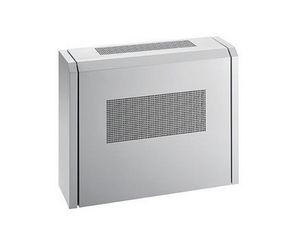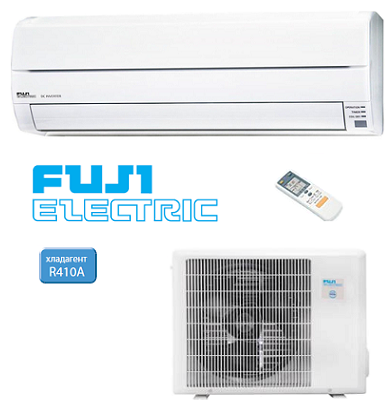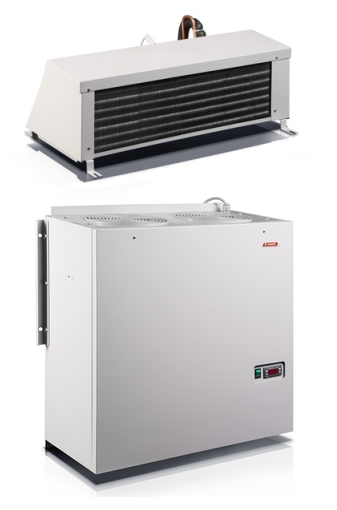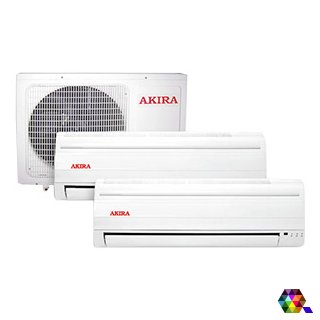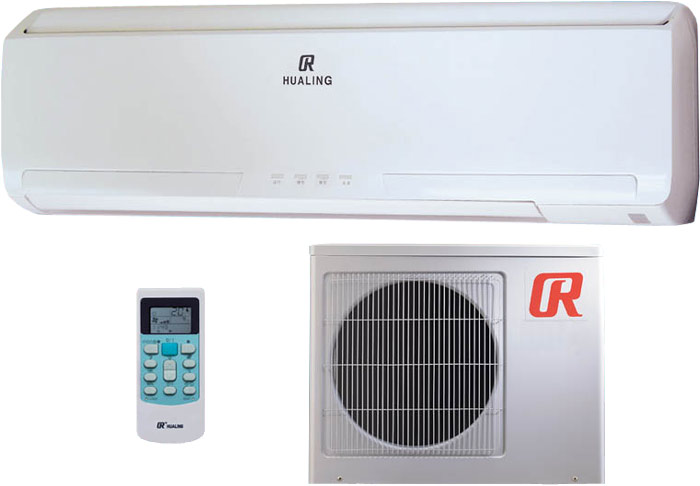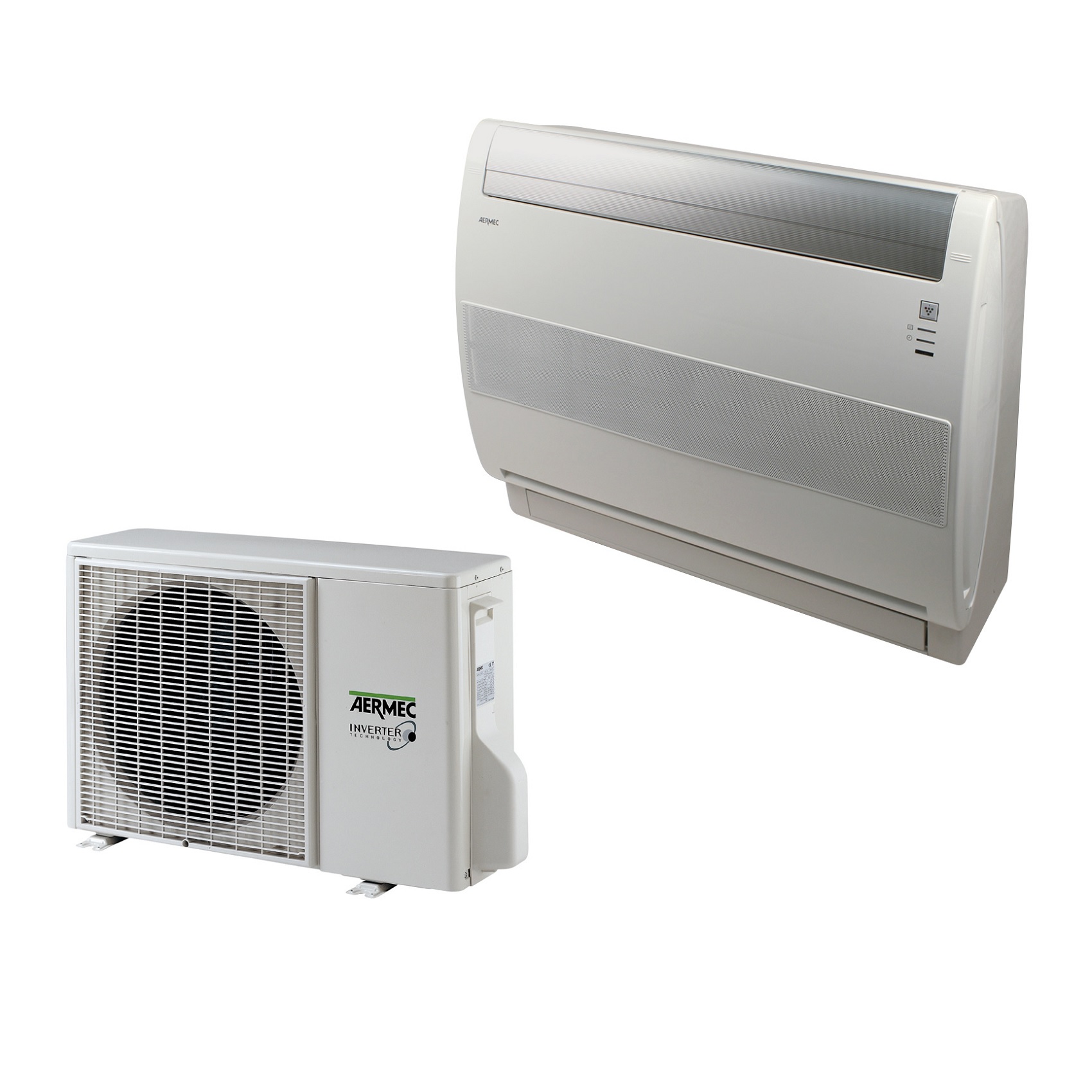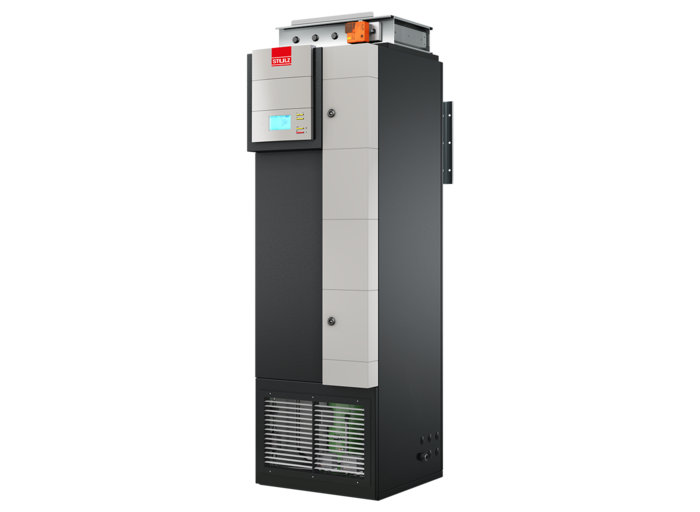One of the main leaders in the production of high-class climatic equipment is the Japanese company FUJITSU. She has found recognition all over the world due to reliability, availability of manufactured equipment and constant movement in step with innovative technologies that make human life easier and more comfortable.
The catalog of climate control systems impresses with its variety of series and models among all types of equipment. At the same time, any FUJITSU GENERAL air conditioner has excellent performance and thoughtful design. To make sure that these statements are true, you must carefully read the company's products.
- Types and series of FUJITSU air conditioners
- Wall split systems
- Reviews of inverter air conditioners FUJITSU GENERAL
- Channel split systems
- Cassette, floor, floor and ceiling FUJITSU air conditioners
- Multi-split systems
- Multi-zone systems
- Advantages and features of FUJITSU GENERAL multi-zone systems
- Manuals and technical documentation for FUJITSU air conditioners
- Customer reviews of FUJITSU air conditioners
Types and series of FUJITSU air conditioners
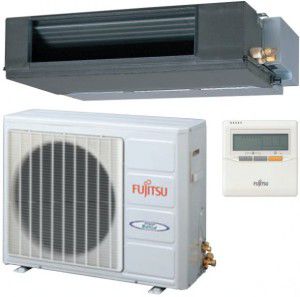
Like all manufacturers, FUJITSU has a huge number of series and models of standard split systems and inverter splits with various types of indoor units, multi- and multi-zone installations. They all have several common positive characteristics, and these are:
- increased energy efficiency;
- high-quality filtration;
- smart protection and automation system;
- long warranty period.
Each serial line has features that complement this list.
Wall split systems
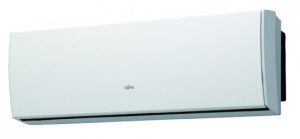
The best selling are FUJITSU GENERAL household wall-mounted air conditioners. They are installed in apartments, offices and rooms with a small or medium area, where standard capabilities (cooling, heating) are required, but there are no strict regulations for the accuracy of the specified parameters and maintaining a certain level of humidity.
The serial variety is great. An incomplete list of the presented climatic equipment of this type includes:
- Classic On / Off;
- Airflow Nordic;
- Slide Inverter;
- Nocria Inverter.
Classic On / Off is a standard reversible air conditioner that can not only cool but also warm in the off-season. Here the main advantage is the λ-shaped heat exchanger. It makes it possible to reduce the dimensions of the device, but increase the power indicators at the same time. The series is distinguished by a large number of automatic modes: jalousie swing, air flow adjustment, restart, self-diagnosis and so on.
Devices of this series can be supplemented with a winter kit, which expands the temperature limits when the air conditioner operates in the cold in winter.
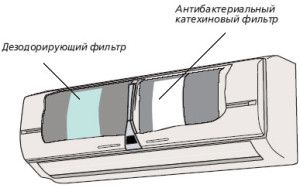
V-pam technology has allowed the creation of a compressor with increased performance. It also reduces operating noise and electricity costs.
I-pam technology is a new way of inverter compressor control, which helps to reach the set temperatures 3 times faster, working at the highest possible power first.
FUJITSU GENERAL also used an increased heat exchanger area in the Airflow Nordic range, so the air handling speed was significantly increased. Smooth air distribution thanks to improved air distribution circuits, a minimum noise level of up to 21 dB, an apple catechin filter and an ion deodorized filter are the special advantages of this range.It should be noted that these air conditioners can work for cooling at an outdoor temperature of up to -25 °.
It is worth saying that the apple-catechin filter, thanks to the polyphenol in its composition, perfectly kills not only bacteria and viruses, but also mold.
The Slide series is an increased variety of standard sizes, low-noise operation, filter clogging indication and increased power mode.
The Nocria series is ultraviolet radiation for air disinfection, automatic cleaning of the filtration system, high performance rates, three-way flow distribution, heat exchanger dehumidification and protection against unacceptable temperatures.
Reviews of inverter air conditioners FUJITSU GENERAL
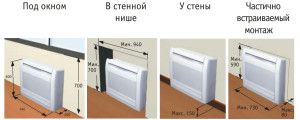
FUJITSU GENERAL has focused on inverter models among split systems due to their minimum power consumption. It is inverter air conditioners that collect the maximum number of positive reviews.
In general terms, people characterize this type of technology as:
- stylish in appearance;
- economical in terms of budget;
- quiet and fast in achieving the required air parameters;
- not “thinking” for a long time - reacts instantly to commands from remote control;
- does not create temperature zones with different indicators;
- durable (for many, the FUJITSU inverter works for 8-10 years without problems).
Among the reviews about FUJITSU air conditioners, there is another important point - the price. It suits the standard consumer and is quite consistent with the quality of the climate control device.
Channel split systems

Quite a wide selection of models is presented among FUJITSU GENERAL duct air conditioners, mounted in the under-ceiling space in a false ceiling or suspended structure. Their installation is required when:
- complex room configurations;
- the need to maintain several separate areas;
- needs for work in low temperature conditions outside the building;
- the need to preserve the interior.
There are devices with different types of air supply pressure: low-pressure, medium-pressure, high-pressure. But all FUJITSU duct air conditioners have the following advantages:
- advanced control options (weekly timer, hot start, button lock);
- the ability to add fresh air up to 30% of the total volume of air masses;
- low static pressure mode;
- low noise effect;
- achievement of the required humidity indicators;
- ease of installation.
Medium-pressure ones have two options for connecting the condensate drain. Of course, FUJITSU GENERAL applied two latest developments in ducted air conditioners - V-pam and I-pam technologies. The power of this cooling system varies in the range of 12-25 kW and depends on the model. This value is sufficient for efficient processing of a 4-5-room apartment or a medium-sized office.
Channel-type air conditioners can be included in a multi-split system from one outdoor and several indoor units.
Cassette, floor, floor and ceiling FUJITSU air conditioners
| Air conditioner type | Features of the |
| Cassette |
|
| Floor |
|
| Floor-ceiling (sub-ceiling) |
|
Multi-split systems
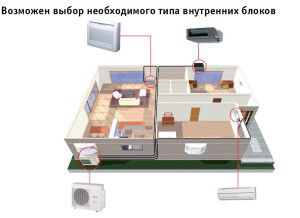
Inverter multi-splits of this brand are systems with the ability to connect to an outdoor unit from 2 to 8 internal ones, which can differ in type, power and other indicators, and with a total cooling area of up to 200 m². All of them have high performance, variability of operating temperatures, a long route, ease of installation and a convenient free layout. Such an installation has both automatic self-diagnosis, and maintaining the minimum temperature in the room in the absence of people, and a low-noise mode, and a timer, and many functions to create an ideal microclimate.
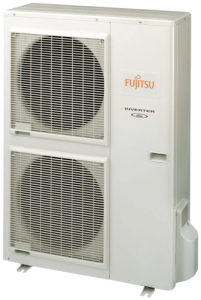
Among the FUJITSU GENERAL multi-split systems, there are a number of synchronous devices that cannot be assembled in a free version. All indoor units are of the same type and power. The outdoor unit can be combined with 2-3 indoor units.
Such semi-industrial systems are distinguished by synchronous control, an extended operating temperature range, a long route, and a variety of installation. This is an efficient use of space and the absence of a point distribution of air flows.
For those who care about the absence of noise and vibration, this is the ideal solution.
Multi-zone systems
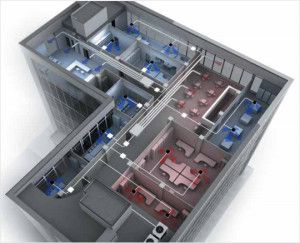
Japanese FUJITSU multizone units are VRF systems (with variable refrigerant flow), in which from 1 to 3 outdoor units and about 50 indoor units, combined into one freon circuit, can operate. These are huge control and dispatching capabilities that all FUJITSU GENERAL (J, S, V) multi-zone series have.
The total power can go up to 120 kW and handle over 1500 m² of premises. In all systems, the main advantage is the length of highways with the size of one branch up to 150 m² and the difference in height between outdoor and indoor blocks up to several tens of meters. This allows them to be set quite far apart.
FUJITSU GENERAL presents a range of outdoor units in the form of 5 main modules and 3 mini units. The power of the first reaches 135 kW, and the second up to 15.5 kW. Indoor units have 7 types and a total of 55 models with minimum power indicators from 2.2 kW and maximum up to 25 kW.
Advantages and features of FUJITSU GENERAL multi-zone systems
Impressive variability in operating temperatures. Outdoor units for cooling - from -15 to + 45 °; mini VRF - from -5 to + 45 °. When heated - from -20 to + 21 °. Such systems can operate all year round and around the clock.
Wide performance range. The external unit can be connected to internal ones with a total power exceeding its own by 30-50%.
High reliability of the system due to alternate and standby operation of outdoor units, protection against liquid return to the compressor, a special coating that prevents corrosion of the heat exchanger.
A wide range of automatic modes, such as, for example, switching and selecting the desired mode - if the room temperature is insufficient, the system will automatically start the heating mode.
Low noise level, which reaches 19 dB in low-performance indoor units of cassette, wall and duct types with electronic expansion valve.
Significant energy savings due to seasonal temperature settings (you can limit the range of parameters), an automatic shutdown timer (starts for a certain number of hours), limiting the performance of the installation at a low heat load.
The systems are very easy to design and maintain.
The J series is suitable for installation in small buildings, while the S and V series are suitable for multi-storey buildings over 200 m².
Manuals and technical documentation for FUJITSU air conditioners
The standard equipment of FUJITSU air conditioners always includes an instruction manual, which explains the rules for installing the device and the features of its operation.This brochure also includes a section "Instructions for the FUJITSU air conditioner remote control", in which error codes are also described in detail. It is necessary to study it in order to know how various modes are activated via the remote control or on the device itself. Here you will find an explanation of all the functions of a button.
For example, the operating manual for the FUJITSU duct air conditioner explains how to use the wired remote control, which has many new keys:
- ZONE CONTROL - zonal management;
- ENERGY SAVE - mode of economical consumption;
- MASTER CONTROL - setting the operating mode.
This is an incomplete list, therefore, when buying a FUJITSU duct air conditioner or any other type, it is necessary to familiarize yourself with all key symbols and error codes, if any, in the operating instructions for it.
In addition, the manual for the FUJITSU air conditioner contains information on error codes and possible malfunctions of the device. In some cases, the user can fix the problems himself, in others a wizard call is required.
You cannot try to reflash the air conditioner yourself! This can overwhelm all automation settings.
In addition to the instructions for FUJITSU air conditioners, there is also technical documentation, which contains the diagrams of devices, in particular, the wiring diagrams of the FUJITSU indoor and outdoor units and recommendations for repairmen.
It should be borne in mind that for any model of the FUJITSU air conditioner, a separate service documentation is issued, as well as instructions for the consoles, therefore it is impossible to use one scheme for all devices, although they are similar in their solutions.
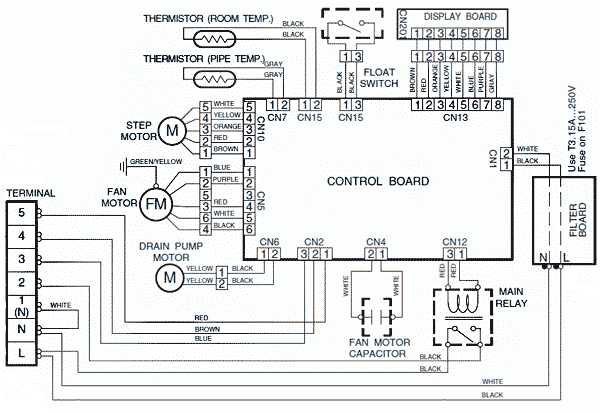
On the contact plate there are clamps for interunit connections and power connections:
- L - phase;
- N - neutral;
- Line filter (Filter Board) protects against voltage surges;
- The microprocessor (Control Board) controls the operation of devices, receives and processes data from sensors, is responsible for thermoregulation, shows information on the display, and self-diagnoses problems;
- The Main Relay supplies voltage to the compressor;
- The display board (Display Board) displays the main parameters of the work;
- Thermistor (PT) - evaporator temperature sensor;
- Thermistor RT) - intake air temperature sensor;
- A step motor (Step Motor) opens the louvered grille, thanks to its discrete angular movements, it is possible to very accurately adjust its position;
- Drainage pump (Drain P.M.) for cassettes;
- Float switch condensate level sensor for cassettes;
- Fan Motor - fan motor;
- Fan Motor Capacitor - Fan motor starting capacitor.
If for some reason it is not possible to find the wiring diagram of the indoor unit of FUJITSU air conditioners (this also applies to outdoor ones), then you should contact the manufacturer or distributor.
Customer reviews of FUJITSU air conditioners
99% of the reviews on FUJITSU conditioners are positive. Most users note in their work:
- noiselessness - this criterion is called one of the first;
- energy efficiency - many began to spend less money on electricity compared to using air conditioners from other companies;
- high-quality air processing - the selected temperature is reached quickly and well maintained throughout the entire operation of the unit, there are no differences in marks across the zones;
- the length of the route - for some lines, it allows installation even in those buildings where it is not allowed to spoil the facade with any installations;
- many different "chips" and "gadgets" such as a weekly timer or air flow adjustment;
- ergonomics - saving space on the face.
Many buyers note in their reviews of FUJITSU air conditioners that the quality of work and the duration of operation fully justify the price of the device itself and its installation.

